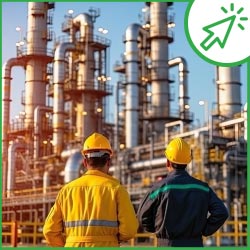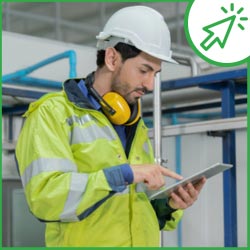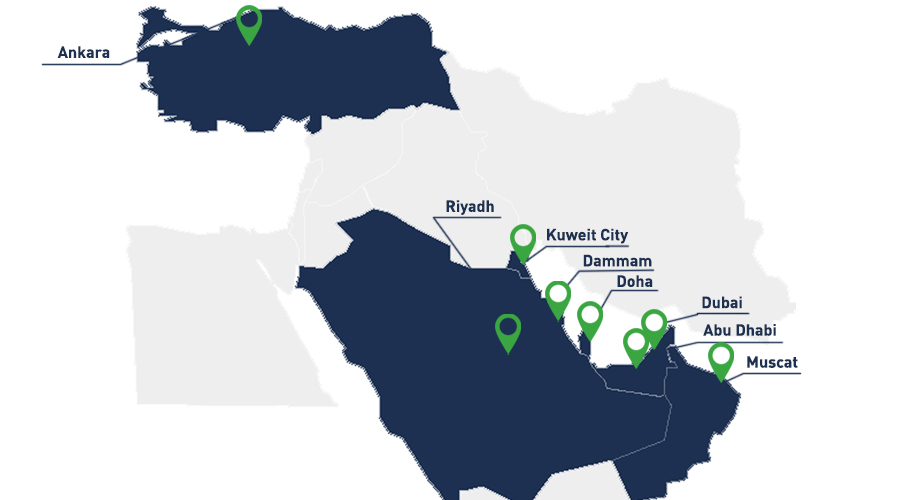Your challenges
in improving public and worker health and safety
- Addressing the environmental and social impacts of projects to ensure sustainability and community well-being.
- Implementing procedures to protect workers from occupational hazards and ensure their well-being.
- Managing risks effectively through baseline studies, impact predictions, and mitigation strategies.
- Engaging with the community to gather input and address concerns related to project impacts.
- Analyzing risks associated with falling objects, emergency systems, evacuation procedures, fire, explosion hazards, and toxic gas exposure.
- Implementing measures to mitigate identified risks and prevent accidents or incidents.
- Ensuring compliance with safety regulations and standards to maintain a safe working environment.
- Planning and preparing for emergency situations to minimize operational disruptions and protect personnel.
- Analyzing flammable gas distribution, ignition sources, and fire likelihood to enhance emergency preparedness and mitigation strategies.
- Establishing benchmarks for design, construction, and operation to ensure optimal performance and regulatory adherence.
- Developing protocols to guide safety procedures and ensure compliance with safety protocols and project specifications.
- Evaluating the fit between workers' physical capabilities and tasks to reduce strain and injury risks.
- Providing recommendations for workstation and equipment redesigns to improve usability and productivity.
- Minimizing human error by analyzing human-system interfaces and ensuring systems align with human capabilities.
- Promoting a healthier and more efficient work environment through ergonomic adjustments and human factor considerations.
Contact us ?
Apave Solutions
in Middle East

Health, Safety, and Environment (HSE) Plans and Assessments

Health, Safety, and Environment (HSE) Plans and Assessments
These comprehensive evaluations address the environmental and social impacts of a project, as well as the health and safety procedures needed to protect workers and the community. They involve baseline studies, impact predictions, and the development of mitigation strategies, ensuring compliance with regulations and fostering public consultation. The goal is to manage risks effectively and promote a safe, healthy, and environmentally responsible work environment.
- Environmental Impact Assessment (EIA) evaluates the potential environmental effects of a proposed project before it begins. It involves baseline studies, impact prediction, and proposing mitigation measures to minimize adverse effects. The process includes public consultation and results in a detailed report reviewed by regulatory authorities.
- Environmental Management Plan (EMP) details the actions needed to manage and mitigate environmental impacts throughout a project's lifecycle. It specifies impact mitigation measures, monitoring programs, and roles and

Risk Assessments and Analysis

Risk Assessments and Analysis
These assessments focus on ensuring the safety and reliability of operations by analyzing risks associated with falling objects, emergency system functionality, evacuation procedures, fire and explosion hazards, and toxic gas exposure. By implementing preventive measures and improving system designs, these analyses enhance overall safety, ensure regulatory compliance, and prepare for emergency situations, ultimately protecting personnel and minimizing operational disruptions.
- Dropped Object Survey assesses the risks associated with objects falling from heights in a workplace, particularly in construction or industrial settings. This survey identifies potential hazards, analyzes the causes and impacts of dropped objects, and recommends preventive measures to mitigate these risks. The goal is to enhance safety by preventing injuries and damage caused by falling objects.
- Emergency System Survivability Analysis evaluates the ability of critical systems to function during and after emergency situations such as fires, explosions, or natural disasters. It involves assessing the robustness and reliability of emergency systems, identifying potential vulnerabilities, and proposing improvements to ensure these systems remain operational under adverse conditions. This analysis is crucial for maintaining safety and continuity in high-risk environments.
- Escape, Evacuation, and Rescue Analysis involves evaluating the effectiveness of evacuation routes, procedures, and rescue operations during emergencies. This analysis ensures that personnel can safely exit a facility or area in hazardous situations and that rescue teams can respond promptly and effectively. By identifying potential obstacles and implementing mitigation measures, this analysis enhances overall emergency preparedness and minimizes the risk to individuals' safety.
- Fire and Explosion Risk Assessment identifies and evaluates the potential risks of fire and explosions within a facility or operation. This assessment involves analyzing hazardous materials, ignition sources, and potential scenarios that could lead to fires or explosions. The resulting recommendations aim to prevent incidents, mitigate their impact, and enhance overall safety through design improvements and procedural changes.
- Toxic Gas Refuge Impairment Assessment examines the effectiveness of designated safe areas (refuges) intended to protect personnel from toxic gas releases. This assessment evaluates the structural integrity, ventilation systems, and overall preparedness of refuges to ensure they provide adequate protection during gas release incidents. Recommendations from this assessment help improve the safety and functionality of refuges.
- H2S/SO2 Dispersion Analysis studies the behaviour and spread of hydrogen sulfide (H2S) and sulfur dioxide (SO2) gases in the event of a release. This analysis uses modeling techniques to predict gas dispersion patterns, assess potential exposure risks, and identify vulnerable areas. The results guide the development of safety measures, emergency response plans, and risk mitigation strategies.
- Vent & Flare Dispersion & Radiation Study analyzes the dispersal and thermal radiation effects of gases released through vents and flares. This study models the behaviour of vented or flared gases, assessing the impact on surrounding areas, including potential exposure to harmful radiation levels. The findings help optimize venting and flaring operations to minimize environmental and safety risks.

System and Performance Studies

System and Performance Studies
These studies involve analyzing the distribution of flammable gases, identifying potential ignition sources, and assessing the likelihood of fires to enhance emergency planning and mitigation strategies which are essential for maintaining the safety and efficiency of industrial facilities throughout their lifecycle. Additionally, they establish performance standards that guide the design, construction, and operation phases, ensuring compliance with safety protocols and project specifications. By setting clear benchmarks, these studies help maintain optimal performance and regulatory adherence from initial design to ongoing operations.
- Fire & Gas Mapping Study analyzes the distribution and concentration of flammable gases and potential ignition sources within a facility. It identifies areas prone to gas leaks and assesses the likelihood and consequences of fires using modeling techniques and data from detection systems. The study results in visual maps of gas dispersion and fire risk zones, aiding in emergency planning and mitigation strategies.
- Performance Standards define criteria and benchmarks for the design, construction, and operation of industrial facilities throughout their lifecycle. During the Front-End Engineering Design (FEED) phase, they guide initial design parameters and performance criteria. In the Engineering, Procurement, and Construction (EPC) and operation stages, they ensure compliance with project specifications, safety protocols, and maintenance requirements to maintain optimal performance and regulatory adherence.

Ergonomics and Human Factors

Ergonomics and Human Factors
These studies evaluate the fit between workers' physical capabilities and their tasks, aiming to reduce physical strain and injury risks while boosting comfort and productivity. By analyzing workstations, equipment, and human-system interfaces, these assessments provide recommendations for redesigns and adjustments that improve usability, minimize human error, and ensure that systems align with human capabilities, ultimately promoting a healthier and more efficient work environment.
- Ergonomics Study evaluates the design of workplaces, tools, and tasks to ensure they fit the physical capabilities and limitations of workers. This study aims to optimize comfort, efficiency, and productivity by reducing physical strain and the risk of injury. It involves analyzing workstations, equipment, and job tasks, and recommending adjustments or redesigns to improve worker health and performance.
- Human Factor Engineering Assessment Study examines how human interactions with systems, equipment, and environments affect overall performance and safety. This study focuses on optimizing system design to enhance usability, reduce human error, and improve safety and efficiency. It involves analyzing human-system interfaces, cognitive and physical demands, and providing recommendations to ensure systems are user-friendly and aligned with human capabilities.

Project Quality Management

Project Quality Management

Project Supervision

Project Supervision
Fast, reliable local support
in Middle East


Apave is an international group specializing in risk management, with over 150 years of experience.
Every day, Apave's 18,000 employees collaborate with customers to help them protect what they value most: their employees, customers, and assets. Apave offers services and expertise in five key areas: inspection, training, testing and measurements, certification and labeling, and consulting and technical support.
Our teams consist of highly qualified and experienced experts. Thanks to their advanced technical expertise and in-depth knowledge of local regulatory frameworks, they perform reliable and precise technical inspections, considering the specific requirements of the country, sector, and asset involved.
Whether it concerns personal safety, site safety and compliance, environmental safety, or digital security, Apave’s mission is always to be a trusted third party for its customers.
Our other services
Our strengths

OUR CUSTOMER RELATIONSHIP APPROACH

OUR EXPERTISE




